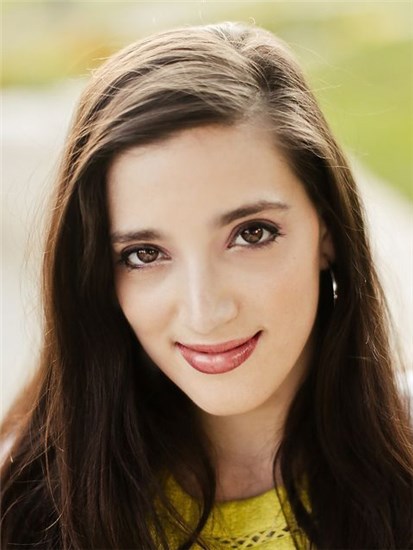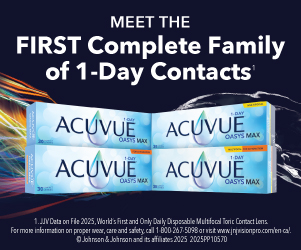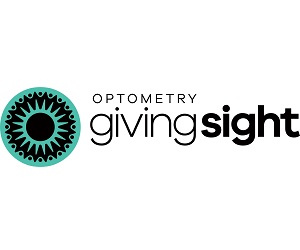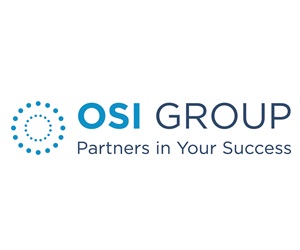
Our aging population, along with the heavy use of digital devices and dry environments of work and living, mean more cases of dry eye. Creating a practice specialty–a dry eye center–as our practice has done, enables you to capture the opportunity to treat these patients, and keep them in your practice with services that address their needs.
I practice in a shared OD-MD practice with two ODs, including myself, and three MDs, and we seethousands of patients a year who experience dry eye.
The MDs and ODs typically share the same patients. Some cases are easily managed with lid hygiene and palliative care. More difficult dry eye cases are managed by the ODs through our dry eye center, which we call the Advanced Tear Analysis (ATA) clinic.
Our clinic is about 10,000 square feet. The exam room for ATA is about 100 square feet, so it does not require much space. The only thing that separates it from the other rooms is the addition of a LipiFlow machine.
The ATA exam can be used for any dry eye patients. However, the process is very thorough. Some cases of dry eye may not require the extensive testing. Patients who do not improve with treatment after one office visit will be referred to the ATA clinic, which is the minority of the patient population.
Each half-day may average from 9-13 post-operative and acute care patients. The ATA clinic will schedule only up to two additional patients for a half-day. Due to scheduling and post-operative care demands for time slots, the ATA schedules patients on two half-days a week. The exams can range from 45 minutes to an hour. We may see four ATA exams a week per OD. These exams take longer, but are 50 percent more profitable than a traditional office visit.
EXPANDED SET OF OPTIONS: NEW TOOLS
As the volume of dry eye patients grows, the OD can serve an unmet need. The OD can treat most cases of dry eye. For severe cases, the MD can do surgical procedures such as tarsorrhaphy, gold or platinum weighted eyelid implants, intraductal probing and punctal cautery.
CREATE A “DRY EYE CENTER”
The ATA exam represents the new exam that is dedicated to the diagnosis, management and treatment for the more difficult cases of dry eye. The patient must have had an initial comprehensive examination beforehand either at the practice, or at another practice. ATA exams share clinic space with post-operative exams and walk-in patients.
Comprehensive exams have their own set of rooms as these exams typically take the longest amount of time. The initial dry eye, or ATA, exams are held on two half-days a week for the initial testing and evaluation. Re-checks typically take less time, and can be scheduled throughout the week if necessary. LipiView II (TearScience) imaging is done on all patients, and the machine is centrally located near other pre-testing equipment. The exam room with the LipiFlow is reserved for the ATA clinic during scheduled treatments or possible treatments.

There are many opportunities for managing dry eye in a refractive surgery practice, even if it is only during post-operative healing. Some post-operative patients need extra help with dryness. The majority of my exams are geared toward treating the ocular surface. Treating the ocular surface in general creates better surgical candidates, leads to improved visual outcomes and increases patient satisfaction.
DRY EYE: A GROWING PATIENT CHALLENGE
The prevalence of dry eye is estimated to be as high as 30 percent in some larger population studies for adults over age 50, with women suffering in greater numbers than men. Medications contribute to dryness. Environment and climate can also exacerbate dryness.
An unfortunate, newer trend of dry eye is that we now see younger patients in our practices. A less nutritious diet as compared to previous generations, increased electronic device screen time and contact lens overwear contribute to a poor tear film.
Dry eye is complex and multi-factorial. It is only getting worse, and the patients are increasing. Effectively managing dry eye is one of the greatest challenges in eyecare. Many patients who suffer from dryness struggle with vision, comfort, as well as quality of life. To ease the suffering of one of these patients is a rewarding experience. —Suzanne LaKamp, OD, FAAO
SET DIAGNOSIS & TREATMENT PROTOCOL
All dry eye patients need comprehensive exams. The following dry eye exam services incorporate additional testing for the ocular surface, that could not have otherwise been performed at the comprehensive exam.
The ATA patients get entrance testing with repeat retractions. The technician will then take the patient through HD analyzer imaging. The imaging is helpful in looking at image scatter from either problems with tear film or changes to the natural lens. It is a non-invasive test. Patients may get LipiView imaging if not already done at a previous exam. The patients all take the SPEED questionnaire.
At initial or subsequent visits, there may be various types of staining, tear break-up time, inspection for lid abnormalities, and Schirmer’s testing with anesthetic. A slit-lamp exam with meibomian gland functional testing is performed using either the Korb evaluator or with a cotton-tip applicator. There is no additional cost to providing questionnaires or a slit-lamp exam, other than chair time. LipiView and other equipment can be costly to a practice, and need to fit the practice budget. Dry eye exams services can help recover this cost, as well as performing LipiFlow.
Palliative treatments include a wide array of artificial tears (not sold in office) and punctal plugs. Specific artificial tears are recommended (Systane Balance and Retiane MGD are common), and samples are given. Our practice does temporary and permanent plugs. Plugs are a billable service for patients with insurance. Reimbursement for permanent plugs is typically good.
There are pharmaceutical options for treating dry eye. Patients are sometimes prescribed Restasis for tear film insufficiency. We have a new product, Xiidra, which is a promising treatment. More treatment options can lead to increased success. Corticosteroids and Doxycycline are prescribed for dry eye patients who experience a lot of inflammation, but carry a degree of risk with side effects. Many patients are now being treated with Omega 3 supplements or fish oil. We typically recommend higher quality brands such as PRN Omega Dry Eye formula or Nordic Naturals. Supplements can be sold in office, but we do not currently carry them.
Any patients with severe dry eye, such an non-healing epithelium or exposure, would be referred out of our practice. These cases could include surgical intervention, scleral lens fits, serum tears or amniotic membranes.
SELL DRY EYE TREATMENT ACCESSORIES
For managing meibomian gland dysfunction-related dry eye, therapeutic treatments include LipiFlow and BlephEx. We recommend all patients with meibomian gland dysfunction perform lid hygiene and warm, moist compresses for at-home maintenance. We sell the Bruder eye mask. While there are many warming moist eye masks on the market, patients like the convenience of having the mask available in office. Depending on quantity purchased, the Bruder mask can cost the practice $8-$12.50 each. Recommended mark-up would be at least 50 percent or greater.
We also sell Avenova lid cleanser. Most pharmacies charge the patient an average of 3x more for Avenova than for what we sell. It is much more affordable to get the product at our practice. The products are available at the check-out, where the patient will also schedule any following appointments. The warming eye masks and Avenova have been instrumental in helping our dry eye patients, as the majority have meibomian gland disease.
WHO MANAGES THE CASE: OD/MD
While all of the doctors at my current practice manage dry eye disease, the OD plays a larger role. The MDs spend more clinic time performing comprehensive examinations on surgical candidates, which is the largest revenue generator in the clinic. The OD sees a variety of patients including pre- and post-operative surgical care, acute care and patients for dry eye management.
Some of the dry eye patients include acute, resolving post-surgical dryness. There are also patients with chronic dryness for years without a history of surgery. The ATA clinic exams are performed exclusively by the ODs.
INVEST IN NEEDED INSTRUMENTATION
Most dry eye is evaporative, and some of the newer technologies work to improve meibomian gland dysfunction. The most valuable imaging equipment in diagnosing meibomian gland disease is the LipiView II. It is also one of best resources for educating our patients. For patients who suffer from meibomian gland disease, the LipiFlow is a great tool to have in clinic. LipiView and LipiFlow are essential to any dry eye clinic. While cost was previously a big hurdle for patient and practice alike, a recent decrease in activator pricing for the LipiFlow improves accessibility. More clinics will likely purchase the equipment, and hopefully the number of patients who get treatment will increase.
For patients with plaques along the lid margins, lid debridement is an effective procedure in restoring meibomian gland function. A golf club spud can be used in office, as well as the BlephEx.
Practices typically purchase the LipiView/LipiFlow and the BlephEx equipment. Length of time to profit varies per practice, and depends on what each practice charges for treatment. A typical yearly budget may require four LipiFlow treatments a month and 24 BlephEx treatments a month to be profitable.
As a cash-pay practice, we are fortunate to perform whatever testing we feel is best for the patient without concern for the varying insurer reimbursement policies. The testing aids in diagnosis and patient education. The patients are very receptive to testing. We charge for treatments such as BlephEx, LipiFlow, and punctal plugs. We also charge for products sold in-office such as the Bruder compress and Avenova. Each exam, including follow-ups, has a fee. We are reimbursed 100 percent for what we charge. For managed care patients, there is no current insurance coverage for meibomian gland dysfunction.
EDUCATE PATIENTS ABOUT DRY EYE SERVICES
Dry eye services are marketed within the practice by word of mouth. The doctors will refer current and new patients to the ATA clinic if the dry eye patients need further testing and follow-up. Current plans involve integrating the ATA online link into the main web site. We have one that we can give out to patients, but is not yet accessible to the general public.
We developed a dry eye handout that is available in all exam rooms. The handout includes various treatments for dry eye. LipiFlow and BlephEx are some of the listed treatments. It is helpful to have a handout that advertises provided services, which the patient may elect to later choose if palliative therapy is not enough.
The dry eye clinic is not currently advertised on the web site, but will be in the near future. The services are relatively new, and were mainly developed as a way to better serve our current patients. The practice model is direct business-to-consumer. Within a few months of beginning the dry eye clinic, patients new to the practice are scheduling. This was surprising considering we have not actively advertised outside of the practice. There have also been a few referrals from outside practitioners. The addition of LipiFlow has been driving some of this outside business for the dry eye clinic. Word-of-mouth is also contributing to the increase in new patients.

SUZANNE LAKAMP, OD, FAAO
Suzanne LaKamp, OD, FAAO, is an associate at Durrie Vision in Overland Park, Kan. To contact: dr.suzanne.lakamp@gmail.com























